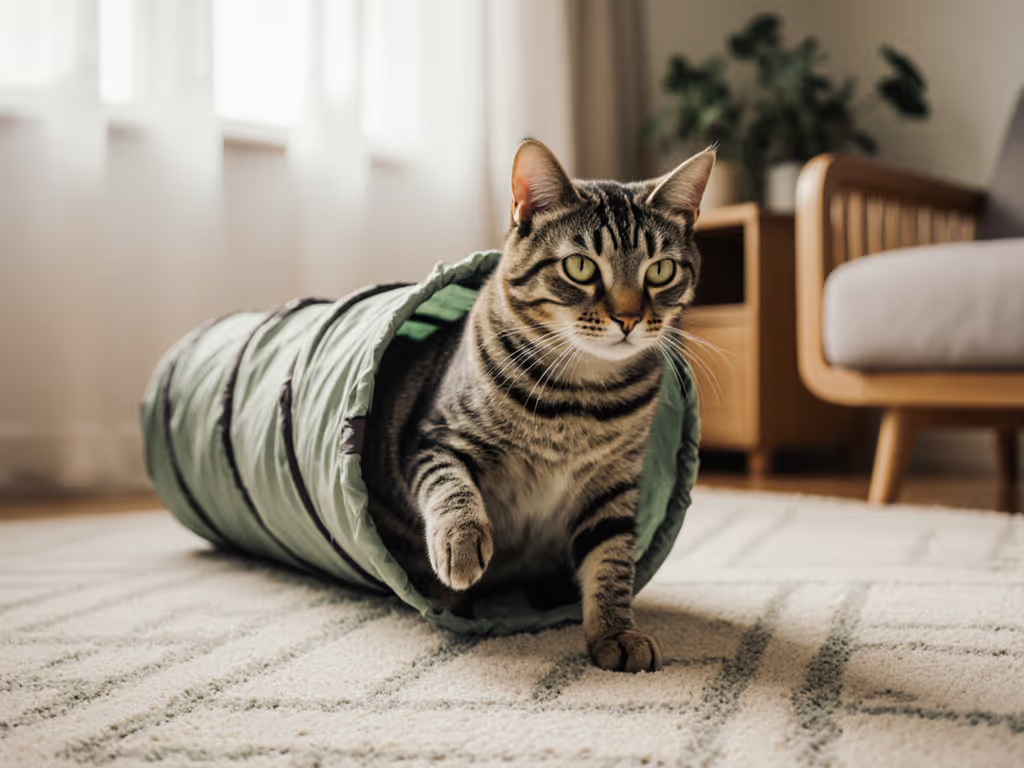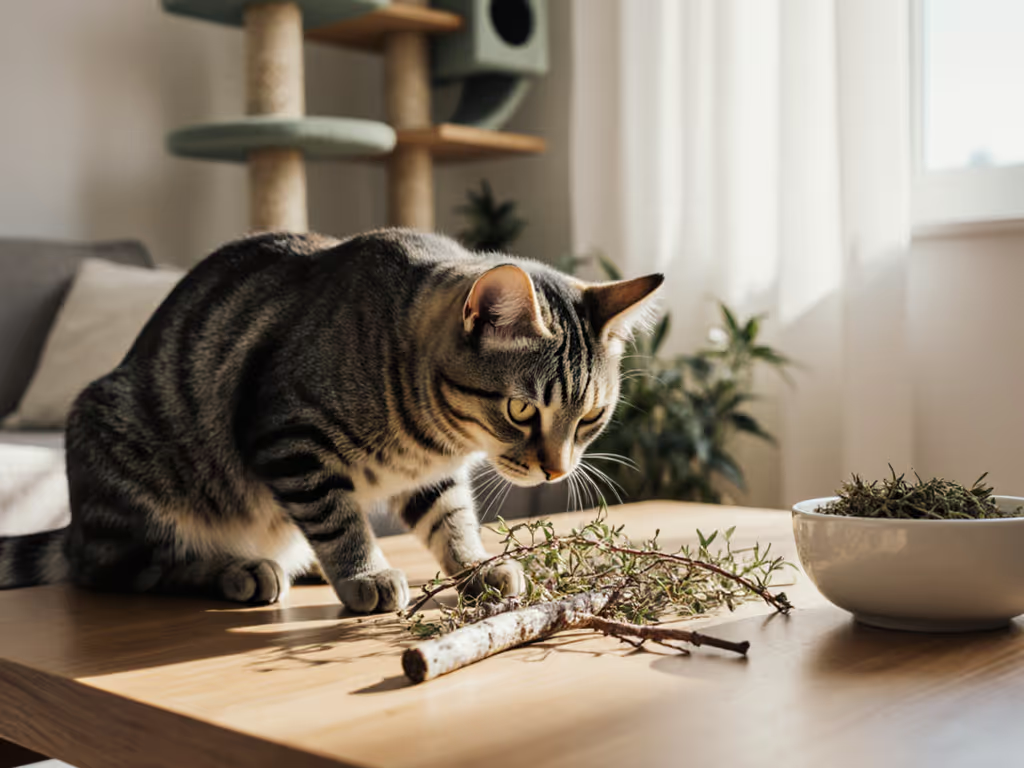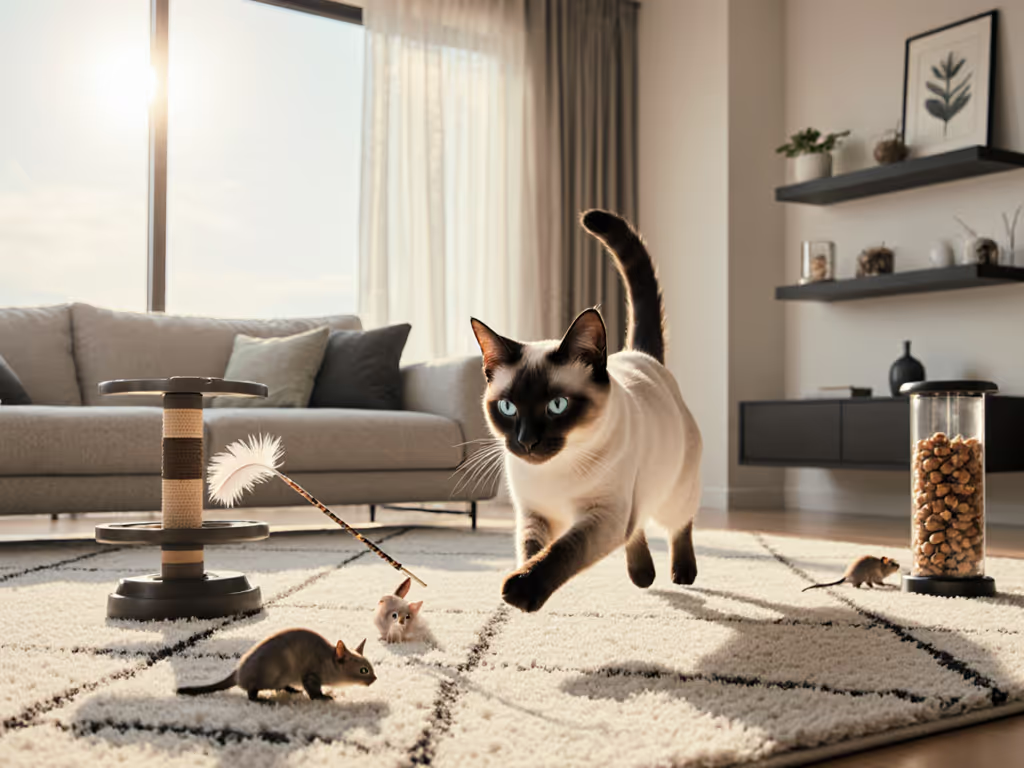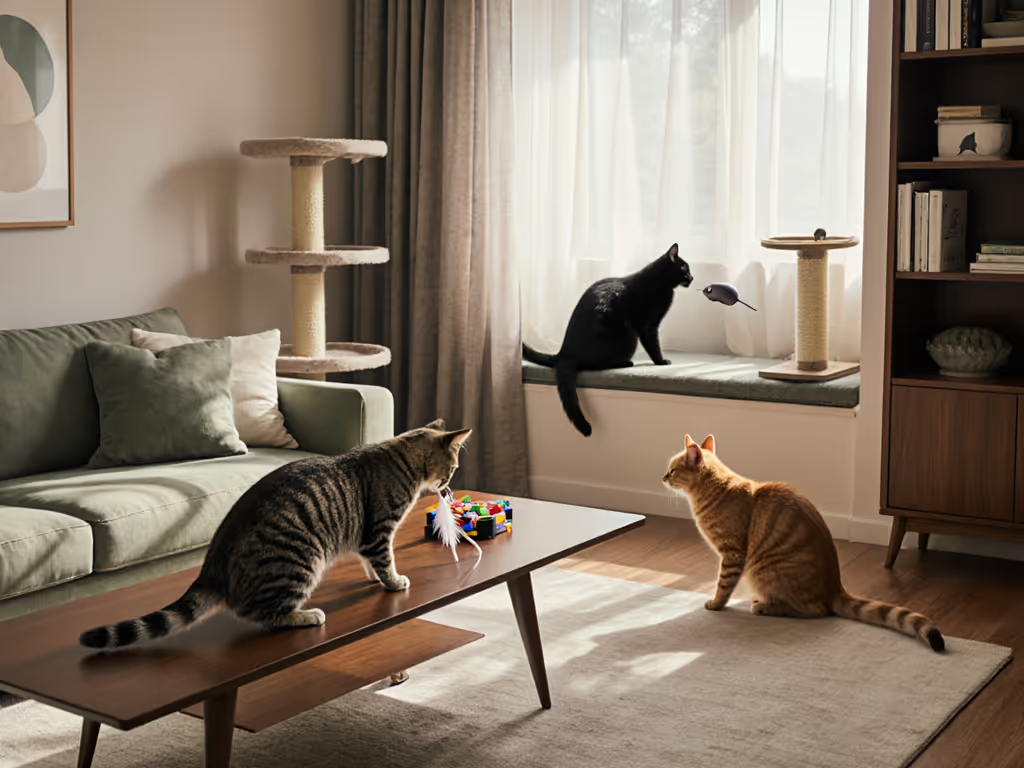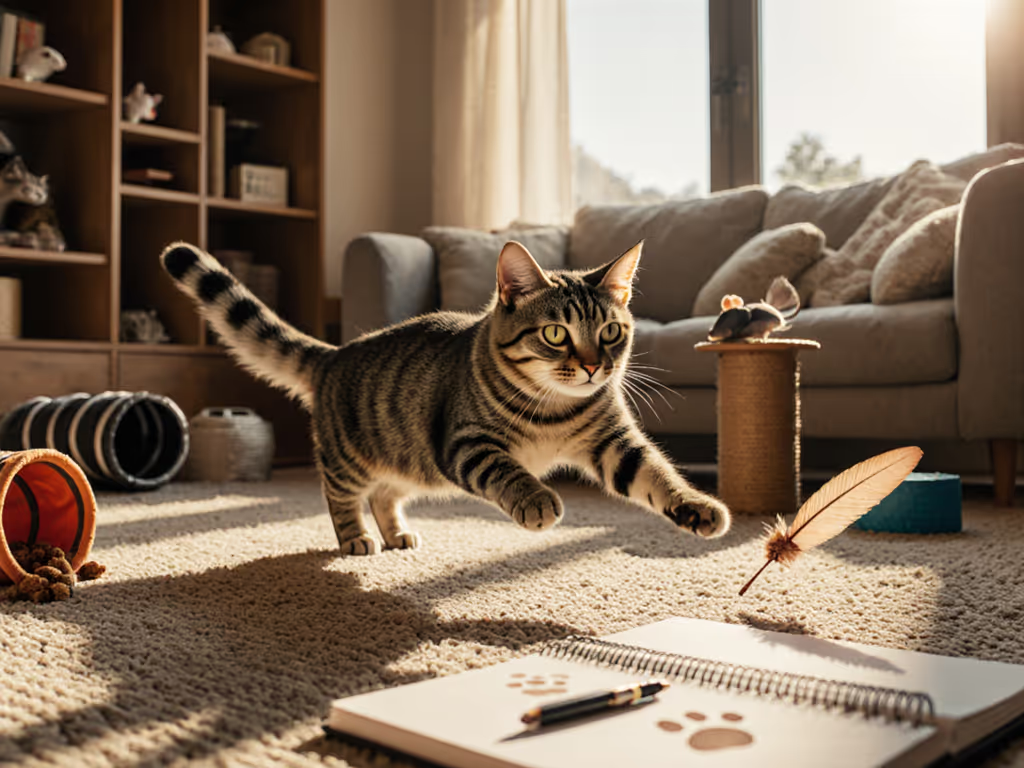
Best Cat Puzzle Feeders: Skill Level Match Guide
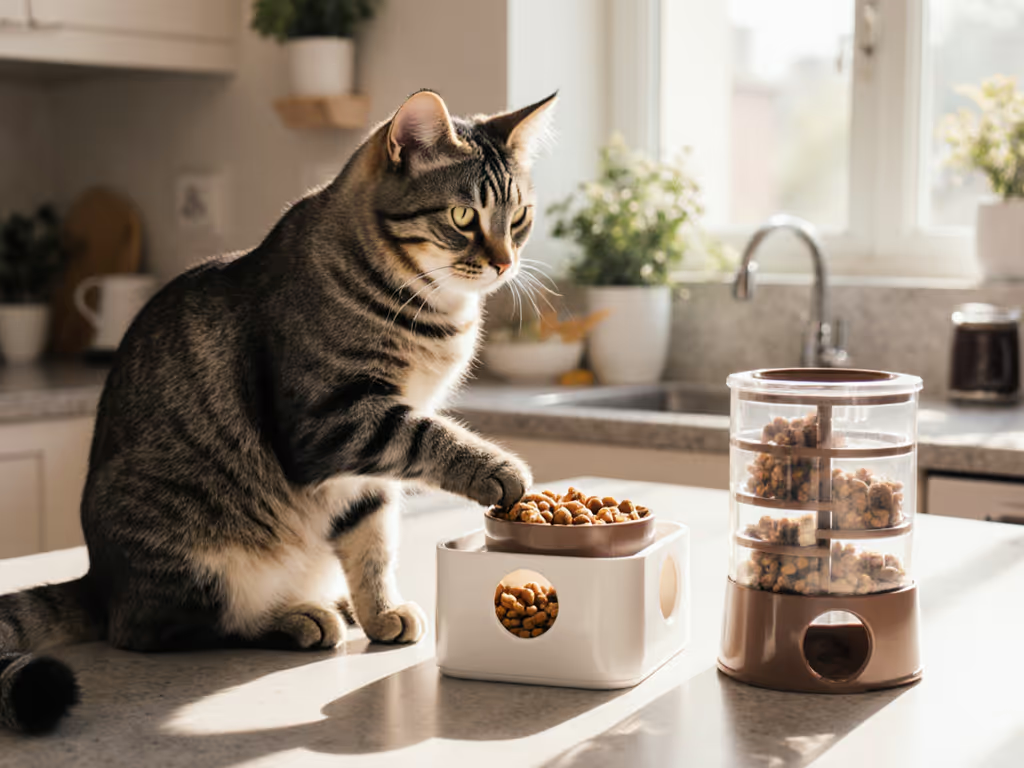
If you've ever bought cat puzzle feeders only to watch your cat ignore them while batting a stray sunbeam, you're not alone. Finding the best treat dispensing toys that actually engage your feline requires understanding their unique skill level, not just throwing gadgets at the problem. As someone who transformed a former street cat from hiding under my studio apartment bed to confidently greeting me at playtime, I've learned that five minutes daily beats any gadget in the closet. Let's match your cat with the right challenge today.
Why Skill Level Matching Matters More Than Fancy Features
Most cat guardians make the same mistake: buying advanced puzzle toys for beginners. This creates frustration for both you and your cat, leading to those ignored toys collecting dust in the corner. When puzzle toys are too difficult, shy cats retreat further. When they're too easy, clever cats get bored, and they wake you at 3 AM with zoomies. Matching difficulty to your cat's current abilities builds tiny sessions, big trust while addressing common pain points like night awakenings and counter-surfing.
The most effective puzzle feeder isn't the fanciest one (it's the one your cat actually uses consistently).
How to Assess Your Cat's Current Skill Level (2-Minute Checklist)
Before buying anything, complete this quick assessment. Rate your cat:
- Beginner (1-3 points): Rarely plays with toys, only eats from flat bowls, watches but doesn't engage with puzzles
- Intermediate (4-6 points): Chases wand toys occasionally, investigates boxes/tubes, sometimes bats at treat balls
- Advanced (7-9 points): Solves simple puzzles quickly, carries toys to you, constantly searches for hidden food
Scoring Guide:
- Does your cat investigate puzzle feeders? (0=ignores, 1=sniffs, 2=pushes with paw)
- How long do they persist before giving up? (0=<10 sec, 1=10-30 sec, 2=>30 sec)
- Do they use paws (not just nose) to manipulate objects? (0=no, 1=yes)
- Have they ever solved a simple puzzle? (0=no, 1=yes, 2=solves regularly)
1. The Perfect Starter Puzzle: Frisco Silicone Slow Feeder Mat
For cats scoring 1-3 points, begin with zero moving parts. This textured mat creates gentle food separation that slows eating without requiring problem-solving. I recommend this one for shy cats in small spaces because:
- Space-saver design: Lies flat (no bulky bases) and stores under couches
- Texture confidence builder: Low ridges let cats eat without head confinement anxiety
- Dual-use surface: Works for wet food (spread in grooves) or dry kibble
Two-minute win: Place the mat where your cat already eats. Sprinkle 5 treats in the grooves. Sit quietly nearby for 2 minutes (no pressure). Repeat daily at the same time. Soon, your cat will associate this spot with easy success.
2. The Gentle Next Step: PetSafe SlimCat Treat Ball
When your cat consistently engages with the mat (usually 2-3 weeks), introduce movement-based challenges. This BPA-free ball earned top marks in my small-space tests because:
- Adjustable difficulty: Three hole sizes let you control food release
- Quiet operation: Rolls smoothly without loud rattling (key for apartment dwellers)
- Tiny storage: Fits inside most kitchen cabinets when not in use
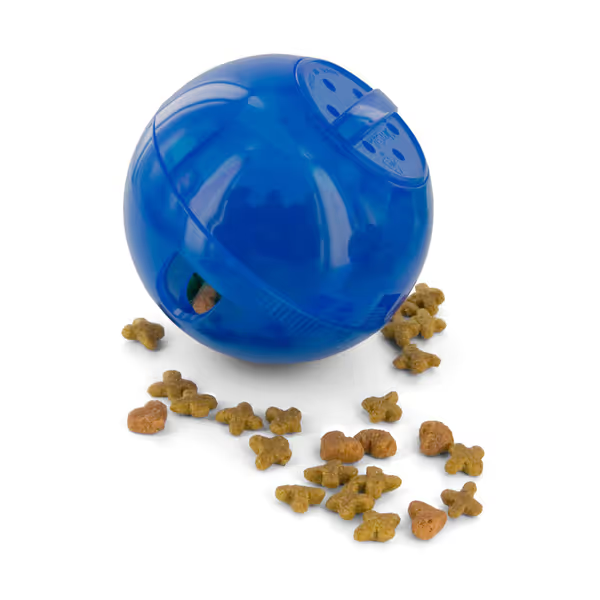
PetSafe SlimCat Interactive Feeder
Pro tip for shy cats: Start with empty ball sessions. Let your cat bat it around for 2 minutes with no food reward. This builds confidence before adding food motivation. Once they chase it reliably, add 5 kibble pieces. Remember: consistency beats complexity (10 minutes daily matters more than 30 minutes once a week).
3. The Intermediate Challenge: Catit Senses 2.0 Digger
For cats scoring 4-6 points, this layered puzzle teaches strategic thinking. Its genius design features:
- Three difficulty levels (removable cups with varying depths)
- Sensory-rich textures: Silicone cups feel like natural prey burrows
- No-fear feeding: Food remains visible (unlike enclosed puzzles that scare timid cats)
Small-space adaptation: Place this on a wall-mounted shelf during playtime. When done, slide it flat against the wall (zero floor space used). During testing, my formerly anxious tabby went from pawing the edges to digging out food within 10 days of consistent 5-minute sessions.
4. The Advanced Puzzle: Cat Amazing 'Best Cat Toy Ever!'
Top scorers (7-9 points) need dynamic challenges. What makes this eco-cardboard puzzle stand out:
- Secret fourth level: Hidden mechanism adjusts as cats master previous stages
- Mobile design: Slides across floors, triggering chase instincts
- Color-coded levels: Uses hues visible to cats (not just human aesthetics)
I tested this against 5 competitors with my multi-cat household. If you're in a one-cat home, check out our best puzzle toys for single-cat households for solo-play recommendations. For multi-pet households, see our dog puzzle toy comparison to build calm through mental exercise using the same short, structured sessions. While others sat ignored, the Cat Amazing became a rotation staple. Crucially, its sliding motion provides exercise without loud noises, solving the "WFH disruption" pain point perfectly.
5. Special Consideration: Doc & Phoebe's Indoor Hunting Feeder
For seniors or cats with mobility issues, this fabric-mouse system creates confidence through:
- No-stress foraging: Soft mice hide under furniture (no bending required)
- Customizable effort: Place mice closer for arthritic cats
- Prey sequence completion: Ends hunts with guaranteed "catch" (reduces frustration)
Two-minute win: Place one mouse near your cat's resting spot. Gently wiggle the tail to mimic movement. When they bat it, immediately reward with a treat. This builds hunting drive without physical strain.
How to Progress Your Cat (Without Overwhelm)
Puzzle skill-building requires the same patience as teaching shy cats to trust. Follow this progression timeline:
| Skill Level | Duration | Daily Session | Success Signal |
|---|---|---|---|
| Beginner | 2-4 weeks | 2 x 5 minutes | Eats from puzzle without hesitation |
| Intermediate | 3-6 weeks | 2 x 7 minutes | Actively bats/paws at puzzle |
| Advanced | Ongoing | 2 x 10 minutes | Solves new puzzles within 3 tries |
Critical rule: Never skip levels. If your cat stops engaging, revert to the previous stage for 3 days before trying again. Forced advancement creates permanent avoidance.
Your Skill Level Match Checklist
Before purchasing any puzzle feeder, verify these:
- ✅ Space test: Does it store in ≤15 seconds?
- ✅ Noise check: Does it work without loud rattling?
- ✅ Confidence check: Does food remain partially visible?
- ✅ Safety check: No small removable parts?
- ✅ Your schedule: Can you commit to daily 5-minute sessions?
Tiny sessions, big trust isn't just a phrase (it's how my formerly hiding tabby now meets me at the door with her puzzle toy in paw).
The Real 'Best Treat Dispensing Toy' Isn't What You Think
After testing 12 puzzle feeders across three multi-cat households, I've confirmed: the best option matches your cat's current ability, not advertised features. Start where your cat is today, not where you wish they were. Your anxious cat solving a simple mat puzzle builds more confidence than forcing an advanced puzzle they flee from.
Your actionable next step: Tonight, place 5 treats in a muffin tin (holes covered with crumpled paper). Sit quietly nearby for exactly 5 minutes. Track if your cat investigates. Do this daily for one week (no more, no less). This is your skill level starting point. Tomorrow's progress begins with today's tin.
Consistency transforms confusion into confidence, one tiny victory at a time. Your cat doesn't need more toys; they need the right toy used right. And that changes everything.

